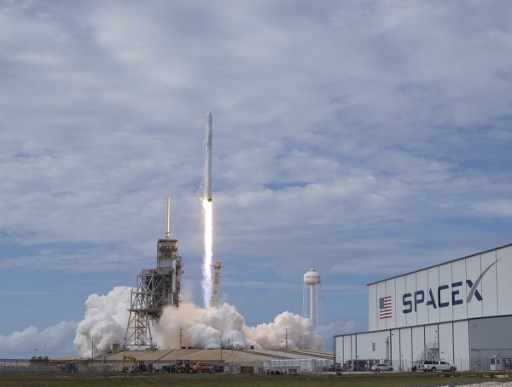
MIAMI, United States (AFP) — SpaceX launched a Falcon 9 rocket Monday carrying a South Korean communications satellite to boost broadband coverage for southeast Asia and the Middle East, and stuck its 19th rocket landing in two years.
The tall, white rocket roared into the blue sky over Cape Canaveral, Florida at 3:34 pm (1934 GMT), propelling Koreasat-5A toward a geostationary orbit some 22,000 miles (36,000 kilometers) from Earth.
The satellite is designed to replace an earlier version, called Koreasat 5, which launched in 2006. The satellite was successfully deployed, SpaceX confirmed about 45 minutes after launch.
Minutes after launch, the rocket separated and the tall portion, called the first stage, fired its engines and maneuvered its grid fins to guide itself back to an upright landing on an ocean platform.
Less than nine minutes after takeoff, the scorched rocket touched down on a droneship marked with an X and labeled “Of Course I Still Love You.”
“A little toasty but the Stage 1 is certainly still intact on the droneship,” said a SpaceX commentator, as video images showed the rocket standing upright on the platform.
Monday’s launch marked the 16th for SpaceX so far this year.
Headed by space enthusiast and solar energy entrepreneur Elon Musk, SpaceX is working on re-using rocket parts after launch — rather than jettisoning them into the ocean as is the typical practice.
So far, the company has managed to land 12 rockets on ocean platforms and seven on solid ground.
The goal is to save money and eventually bring down the cost of space travel.
© Agence France-Presse







